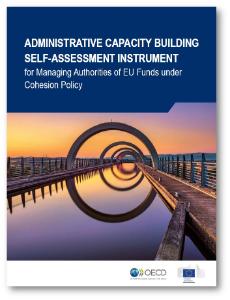Publications

Strengthening Governance of EU Funds under Cohesion Policy
Administrative Capacity Building Roadmaps
Successfully managing and administering European Structural Investment Funds (ESIF)
rests on the effective governance of the investment process, on the administrative
capacity of Managing Authorities, and on the engagement of a diverse range of stakeholders,
including beneficiaries. The OECD has developed an analytical framework with four
dimensions – people management, organisational management, strategic planning, and
framework conditions – to analyse the challenges and capacity gaps confronting Managing
Authorities in the administration and management of these funds. Based on a pilot
project with three national- and two regional-level Managing Authorities, the study
identified a series of common challenges. These include being more strategic and innovative
in how staff, processes and programmes are managed; managing the impact of framework
conditions on stability and certainty in administrative and investment processes;
and needing to ensure that capacity building among Managing Authorities and/or beneficiaries
is undertaken at the appropriate scale. Capacity-building Roadmaps were built with
each participant. This report recommends concrete actions for actors in the ESIF governance
system to build and reinforce the administrative and investment management capacity
of Managing Authorities throughout the EU. The findings can also benefit non-EU public
actors in managing public investment.
Published on January 20, 2020
In series:OECD Multi-level Governance Studiesview more titles
TABLE OF CONTENTS
| Foreword | |
| Acronyms and abbreviations | |
| Executive summary | |
| Building administrative capacity for Cohesion Policy financing | |
| Investing in People for Administrative Capacity | |
| Strategic, agile and responsive Managing Authorities | |
| Generating a more strategic investment cycle among Managing Authorities | |
| The impact of framework conditions on Managing Authorities | |
| Conclusions and Recommendations | |
| Project background and methodology |
Powered by OECD iLibrary
